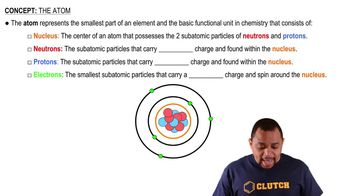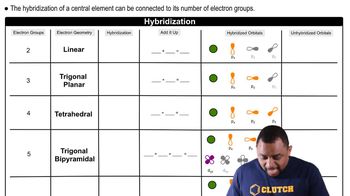Here are the essential concepts you must grasp in order to answer the question correctly.
Electronegativity
Electronegativity is a measure of an atom's ability to attract and hold onto electrons in a chemical bond. It is influenced by factors such as atomic size and the effective nuclear charge. In the case of oxygen and sulfur, oxygen has a higher electronegativity due to its smaller atomic radius and greater effective nuclear charge, making it more capable of attracting electrons.
Recommended video:
Atomic Structure and Bonding
The atomic structure of an element, including its electron configuration, plays a crucial role in determining its bonding behavior. Sulfur, with its larger atomic size and ability to form multiple bonds, can create long chains (like polysulfides) through covalent bonding. In contrast, oxygen's smaller size and high electronegativity lead to stronger, more localized bonds, preventing it from forming similar long chains.
Recommended video:
Molecular Geometry and Hybridization
Molecular geometry and hybridization describe how atomic orbitals combine to form molecular orbitals, influencing the shape and connectivity of molecules. Sulfur can utilize d-orbitals in addition to s and p orbitals, allowing for various hybridization states that facilitate the formation of extended structures. Oxygen, however, typically forms sp3 or sp2 hybridized structures, which are more suited for discrete molecules rather than long chains.
Recommended video:
Hybridization and Electron Geometry
 Verified step by step guidance
Verified step by step guidance

